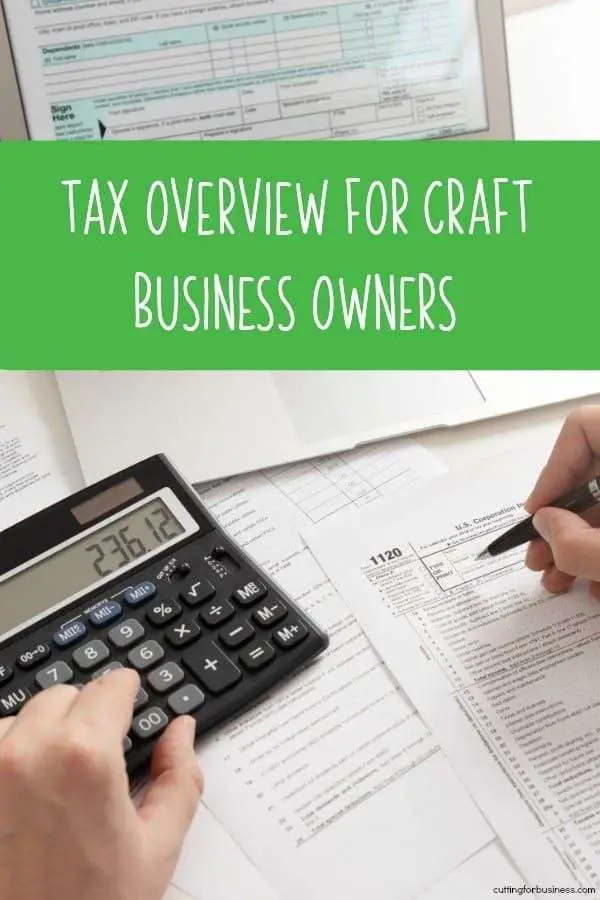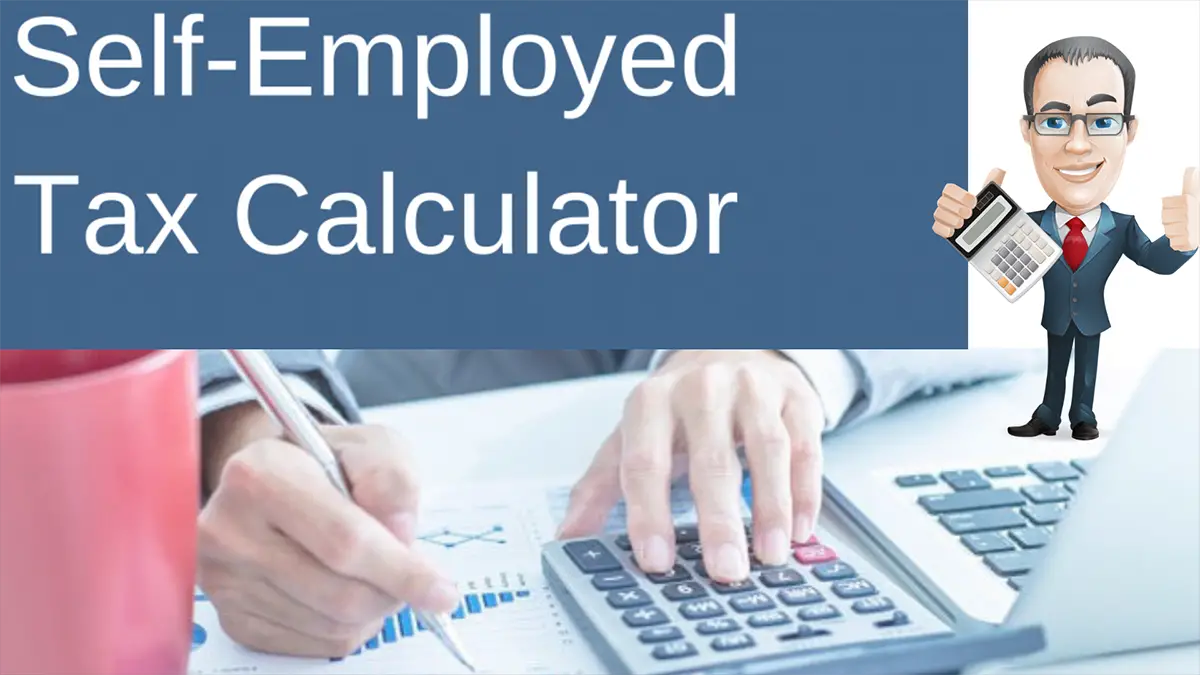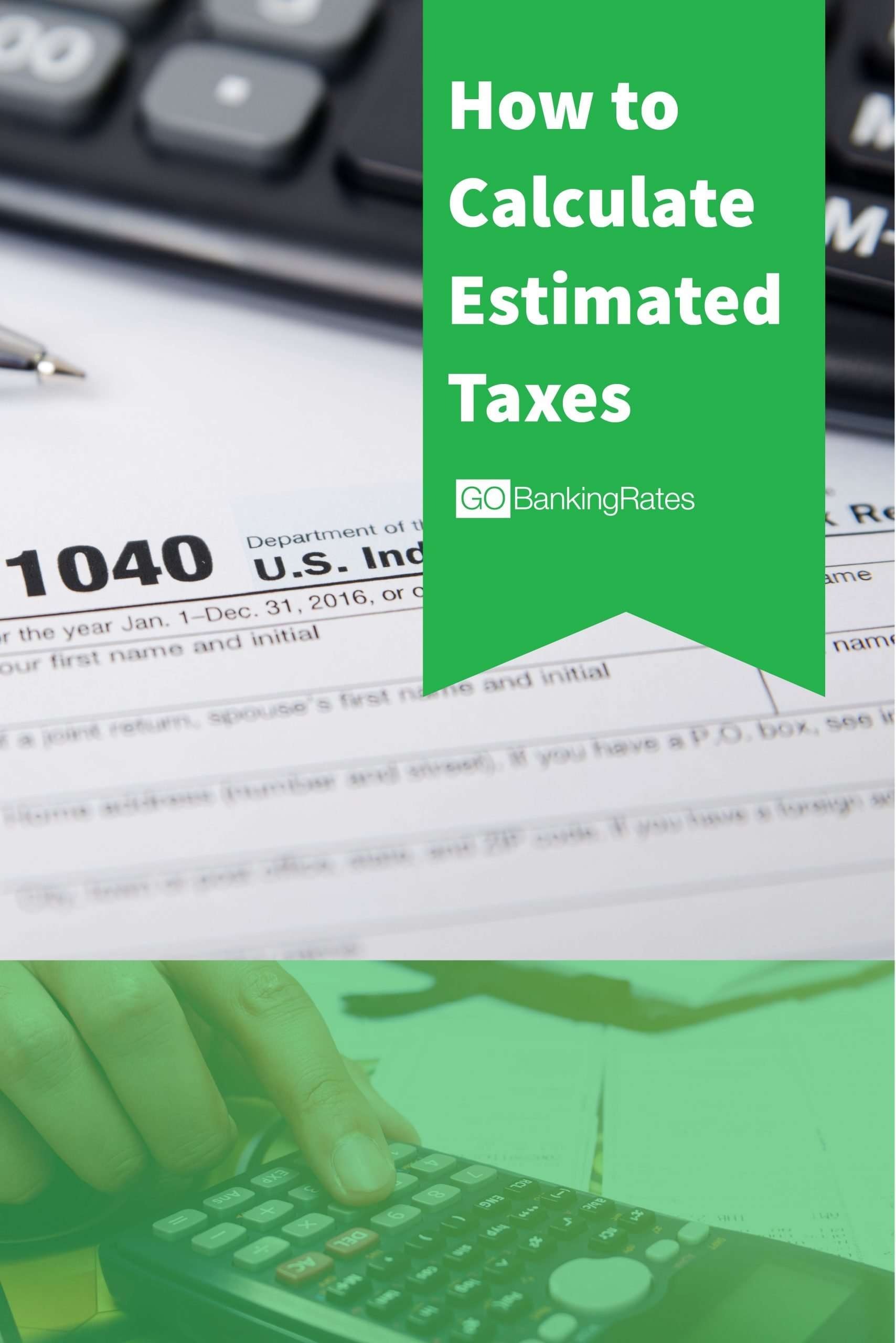Payments Based On Last Year’s Taxes
The easiest way to calculate your estimated taxes is to base them on the tax you paid the previous year. You won’t have to pay a penalty if the total estimated tax you pay is equal to 100% of the tax you paid the previous year or 110% if you’re a high-income taxpayer . This is so even if your income is much higher this year than last.
How We Make Money
Bankrate.com is an independent, advertising-supported publisher and comparison service. Bankrate is compensated in exchange for featured placement of sponsored products and services, or your clicking on links posted on this website. This compensation may impact how, where and in what order products appear. Bankrate.com does not include all companies or all available products.
Bankrate, LLC NMLS ID# 1427381 |NMLS Consumer AccessBR Tech Services, Inc. NMLS ID #1743443 |NMLS Consumer Access
What Are My Self
As a self-employed individual, generally you are required to file an annual return and pay estimated tax quarterly.
Self-employed individuals generally must pay self-employment tax as well as income tax. SE tax is a Social Security and Medicare tax primarily for individuals who work for themselves. It is similar to the Social Security and Medicare taxes withheld from the pay of most wage earners. In general, anytime the wording “self-employment tax” is used, it only refers to Social Security and Medicare taxes and not any other tax .
Before you can determine if you are subject to self-employment tax and income tax, you must figure your net profit or net loss from your business. You do this by subtracting your business expenses from your business income. If your expenses are less than your income, the difference is net profit and becomes part of your income on page 1 of Form 1040 or 1040-SR. If your expenses are more than your income, the difference is a net loss. You usually can deduct your loss from gross income on page 1 of Form 1040 or 1040-SR. But in some situations your loss is limited. See Pub. 334, Tax Guide for Small Business for more information.
You have to file an income tax return if your net earnings from self-employment were $400 or more. If your net earnings from self-employment were less than $400, you still have to file an income tax return if you meet any other filing requirement listed in the Form 1040 and 1040-SR instructions PDF.
You May Like: What Can I Write Off On My Taxes For Instacart
What Is The Self
The self-employment tax is calculated on Form 1040 Schedule SE, and it’s a significant 15.3% of your net business profit. It represents the Social Security and Medicare taxes that you would otherwise share with your employer, each of you paying half.
As an employee, you’d only pay 7.65% as an employee, because of your employer’s equal contribution. If you are self-employed, however, you are both employer and employee and must pay both parts.
If you are considering becoming self-employed, you should consider the tax obligations before you start. Pay your self-employment taxes by following these easy steps.
How These Taxes Are Paid

- Your employer MUST withhold FICA taxes from your employment income.
- You must pay self-employment tax on the net profit of your employment if you still owe these taxes after considering your total income for the year.
You must pay these taxes on your total income. But you can’t over-pay unless your employer has made a calculation error. Here’s a more detailed explanation of how the process of determining and paying Social Security/Medicare tax works:
Recommended Reading: Amend Tax Return Online For Free
What If I Blow It Off And Just Deal With It Later
The IRS will charge penalties if you didnt pay enough tax throughout the year. The IRS can charge you a penalty for late or inadequate payments even if you’re due a refund when you file your tax return.
The IRS might give you a break on penalties if:
-
You were a victim of a casualty, disaster or other unusual circumstance, or
-
Youre at least 62, retired or became disabled this year or last year, and your underpayment was due to reasonable cause rather than willful neglect
Filing As A Partnership
A partnership does not file income tax on its earnings and is not required to pay tax. The income earned from a partnership is divided between the partners, and each respective partner files her own return. The income, deductions and any other credits or losses are divided according to the partnership agreement in place. Each share of income must be reported whether it was received in cash or as a credit. Special rules apply to a partnership concerning capital gains and losses and recapturing cost allowance. If a partnership is dissolved or an interest is sold or disposed, CRA has special guidelines in place.
Don’t Miss: Csl Plasma Taxable
The Typical Withholding Scenario And Basic Tax Rates
Typically, the employer contributes 6.2 percent of your income into Social Security and 1.45 percent into Medicare you pay the other 6.2 percent of Social Security tax plus 1.45 percent of your income for Medicare. Generally, your employer will deduct these amounts from your paycheck and forward them to the government along with its own contribution. When youre self-employed, however, that taskas well as the full amount of the taxesshifts entirely onto your shoulders. Currently, that means you have to pay 12.4 percent for Social Security and 2.9 percent for Medicaid. If you earn more than $200,000, for taxpayers filing as single, or $250,000, for married taxpayers filing jointly, youll have to pay an extra 0.9 percent for Medicare. In general, none of these taxes are considered deductible from your overall business overhead. This is the self-employment tax, and it does not take into account federal or state income taxes.
Paying Taxes On Your Self
The biggest reason why filing a 1099-MISC can catch people off guard is because of the 15.3% self-employment tax. The 1099 tax rate consists of two parts: 12.4% for social security tax and 2.9% for Medicare. The self-employment tax applies evenly to everyone, regardless of your income bracket. For W-2 employees, most of this is covered by your employer, but not for the self-employed!
Don’t feel so intimidated by your tax liability after using our free 1099 taxes calculator. In the next section, we’ll show you how you can reduce your tax bill with deductible expenses.
Don’t Miss: How To Protest Property Taxes Harris County
Does Qb Estimated Tax Account For Self
After comparing QB estimated tax values with my manual calculations using the IRS worksheets, it appears as though QB only includes the standard deduction by default. The deduction amount can be manually adjusted in the tax profile and is not the concern of this post. This post is focused on the lin
Should a spouses W2 income be included in the Quick Books Self-Employed Tax Profile? It seems that the quarterly tax estimator is using only business net income. It seems estimated taxes might be low for a small business owner with low business income married to a high earning W2 employee.
What Is The Self Employment Tax Rate
Ultimately, for the self-employment tax in 2019, you must pay both employer and employee social insurance and health insurance contributions, which are divided as follows: a portion of the Social Security tax, which is a percentage of the first $132,900 net.. entry. The employee’s share of the Medicare tax is 1.
Read Also: Will A Roth Ira Reduce My Taxes
How Much Taxes Do You Pay On A 1099
The self-employment tax rate is 15.3% . The self-employment tax applies to your adjusted gross income. If you are a high earner, a 0.9% additional Medicare tax may also apply.
References:
|
The Federal Income Tax Portion

It is tricky to have a precise idea of how much income tax you will owe until the year is over: a big project can come around during the holidays, or a major unexpected expense can occur on New Years Eve! Thats why most freelancers try to come up with a ball park estimate at the beginning of the year, and add that extra amount to the quarterly self-employment taxes when they send their check to the IRS. To avoid being on the wrong side of the 90% rule, try to be as conservative as possible with your numbers: use the high end of your income estimate and the low end of your business expense. No matter what, make sure youre saving enough.
To calculate your estimated income tax, youll need to come up with an Estimated Gross Income and an Estimated Business Expense Total for the whole year. So lets say youre aiming for $50,000 of Gross Income and about $10,000 of Business Expense you estimate your Net Earnings at $40,000.
You now need to subtract all Above the Line Deductions, you think youll have for the year. Only a few specific expenses qualify for this first round of deductions, and some of them are easy to plan for which works in your advantage when calculating your estimated tax: contributions to retirement accounts, student loan interests, health insurance premiums for individual plans, 50% of your self-employment tax Lets say they add up to $8,000 which takes us to $32,000 thats your Estimated Adjusted Gross Income.
ESTIMATED FEDERAL INCOME TAX
You May Like: Reverse Ein Lookup Irs
Payments Based On Quarterly Income
This is a more complicated way to calculate your tax bill. But, this could come in handy if your income is unevenly distributed. For example, if the holidays bring in the bulk of your revenue, it may be worth using this method.
It requires you separately calculate your tax liability at the four tax deadlines. You’ll have to prorate your deductions and personal exemptions, too.
If you use this method, you must file IRS Form 2210 with your tax return to show your calculations. To use the annualized income installment method, you complete a worksheet at the end of each payment period and figure the payment due.
You can easily calculate your estimated tax payments using all three methods with tax preparation software. The IRS also has an estimated tax webpage you can use.
How To Calculate And Pay Self
You’re considered to be self-employed if you own a business that isn’t a corporation. You must pay self-employment taxes based on the net income of your business.
Self-employment taxes are paid to the Social Security Administration for Social Security and Medicare eligibility. If this tax sounds familiar, it’s because it’s essentially the same as Social Security and Medicare taxes for employees, just with a different name.
You pay these taxes on your personal tax return, along with the income tax liability for your business. Self-employment taxes are not withheld from your income as a business owner. You must figure the amount of the tax and keep track during the year.
You may also need to pay estimated taxes to cover the amount of business income tax and self-employment tax you’ll need to pay with your tax return.
Read Also: 1040paytaxcom
What Taxes Do Self
As a self-employed individual, you file an annual return but usually pay estimated taxes every quarter. Quarterly taxes generally fall into two categories:
- The self-employment tax
- Income tax on the profits that your business made and any other income
For example, in the 2021 tax year:
- The self-employment tax rate on net income up to $142,800 for tax year 2021 is 15.3%. That breaks down to 12.4% Social Security tax and 2.9% Medicare tax. As your income increases past this amount, the 2.9% Medicare tax continues but the Social Security portion stops.
- High earners generally, individuals with incomes of $200,000 and above or married couples with incomes of $250,000 or more are subject to an additional Medicare tax of 0.9%.
To calculate your taxable income as a business owner:
- Take your expected annual gross income the total revenue you received and deduct expenses and any deductions you’re eligible for. For example, if your annual revenue came to $100,000 and you had business deductions that total $30,000, your taxable income amounts to $70,000.
- $100,000 – $30,000 = $70,000 taxable income
Tax Deductions For Self
You can deduct half of your self-employment tax on your income taxes. So, for example, if your Schedule SE says you owe $2,000 in self-employment tax for the year, you’ll need to pay that money when it’s due during the year, but at tax time $1,000 would be deductible on your 1040.
Self-employment can score you a bunch of sweet tax deductions, too. One is the qualified business income deduction, which lets you take an income tax deduction for as much as 20% of your self-employment net income. Plus, there are other deductions available for your home office, health insurance and more. Heres a primer.
About the author:Tina Orem is NerdWallet’s authority on taxes and small business. Her work has appeared in a variety of local and national outlets.Read more
Don’t Miss: Do I Have To Claim Plasma Donations On My Taxes
How Do You Calculate Self Employment Tax Deduction
An overview of the ongoing costs can be found in the section “Tax deduction for self-employed persons”. Calculate the net income from your own business. To do this, multiply the net income by the percentage. Calculate your self-employment tax. Then, for each income below Social Security’s base salary , multiply by that amount.
How Do I Get My Tax Information From Lyft How do I get my tax information from LYFT? Go to the Tax Information tab on the dashboard. Select Download under the document header to download the annual return or tax form.So you can also ask, do I have to charge LIFT from my tax?If you’re making more than $ 400 using Uber or Lyft, you’ll need to file a tax return and report your driving income to the IRS. Most Uber and Lyft drivers declare their income as a sole proprietorship, which allows you to in
Extended Due Date Of First Estimated Tax Payment
Pursuant to Notice 2020-18 PDF, the due date for your first estimated tax payment was automatically postponed from April 15, 2020, to July 15, 2020. Likewise, pursuant to Notice 2020-23, the due date for your second estimated tax payment was automatically postponed from June 15, 2020, to July 15, 2020. Please refer to Publication 505, Tax Withholding and Estimated Tax PDF, for additional information.
Recommended Reading: Do I Have To Report Plasma Donations On Taxes
How Much Should I Set Aside For 1099 Taxes
How much you should set aside for 1099 taxes varies based on your location, income and marital status. However, some financial professionals recommend 25% 35%. This number should be enough to satisfy your self-employment tax, as well as your federal income tax and state tax liabilities.
The reason it depends on where you live is that some states dont have income taxes. Also, depending on your income, you might have to pay more or less taxes. For example, in 2020, your tax rate would be 22% if you earn over $40,125. If youre married, how much your partner earns also factors into your tax bracket.
With that being said, if youd like to get a good estimate, use a self-employment tax calculator.
How To Calculate Estimated Taxes For Self

As you may know, small business owners and self-employed workers often have to pay estimated taxes four times a year. You must pay estimated taxes if you are a sole proprietor, a partner in a partnership, or member of a limited liability company and you expect to owe at least $1,000 in federal tax for the year.
Estimated taxes are due four times per year: April 15, June 15, September 15, and January 15. These tax due dates can shift slightly based on holidays and weekends).
Date What’s Due Payment Period April 15 Pay first installment of estimated tax Jan. 1 – March 31 June 15Pay second installment of estimated tax April 1 – May 31 Sept. 15Pay third installment of estimated tax June 1 – Aug. 31 Jan. 15Pay final installment of your previous year estimated taxes Sept. 1 – Dec. 31
Recommended Reading: Doordash Write Offs
Completing Irs Schedule C
Schedule C is used to calculate your business income for the portion of the year that you were self-employedall the income your business took in, less business expenses. The resulting number is what youll use to calculate your self-employment tax on Schedule SE and what youll report on your Form 1040 as income. If your expenses were $5,000 or less, you can use Schedule C-EZ instead.
What Are Quarterly Taxes And When Are Quarterly Taxes Due
Quarterly taxes are estimated tax payments to the IRS made throughout the year . These payments are based on an estimation of your income for the current year. Most people use their previous years taxes as a guide.
Everyone is required to pay taxes. If youre self-employed or work a typical 9-5 job your taxes are paid in one of two ways:
Withholding taxes from your paycheck – W-2 workers
Paying quarterly taxes – 1099 workers
Traditional W-2 employees usually don’t owe quarterly taxes because taxes are withheld from their pay. However, if you are self-employed , taxes are not withheld from your pay. Which means you are responsible for paying taxes on your own.
You May Like: How Do I Get My Doordash 1099
